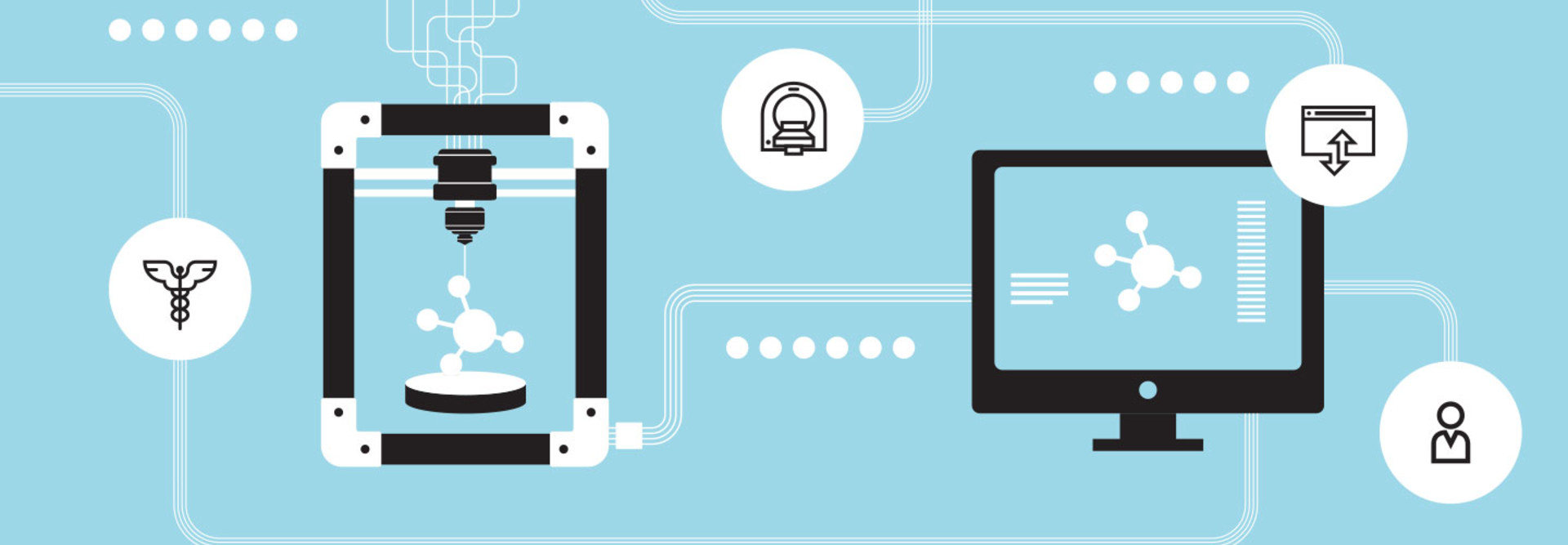3D Printing Aims to Innovate Surgical Offerings for Patients
For individuals who undergo an organ transplant, doctors must induce immunosuppression — the act of reducing the efficacy of the immune system — to ensure the body accepts the new organ. Dr. Kenneth Brayman, director of the renal, pancreas and islet transplant programs and the Center for Cellular Therapy at the University of Virginia Health System in Charlottesville, would gladly relinquish the process in favor of being able to artificially create organs via 3D printing.
“The holy grail of transplants is to be able to do them without immunosuppression,” says Brayman, who studies 3D printing in hopes of creating a person-specific artificial liver.
Bioprinting 3D Lattices
Brayman works with bioengineers to define materials for bio-inks, compounds used to develop the three-dimensional lattices for cells that make up organoids — simplified replicas of organs.
“We need to learn a lot about how cells interact with various types of structures such as proteins ... in a way that promotes cell survival,” Brayman says.
To create the organoids, Brayman and his colleagues use the regenHu 3DDiscovery bioprinter. While they have developed models to be used in some animals, he says, they are not ready for “prime time” use in humans yet.
Still, Brayman believes that in time, bioengineers will create a useful construct for transplanting insulin-producing cells.
Flagging a Growing Market for Medical Printing
The global 3D printing medical device market could reach $2.1 billion by 2020, according to an analysis by the research firm MarketsandMarkets. Continuous technology advances and growing acceptance of 3D printed organs and implants help fuel demand.
Scott Dunham, vice president of research for SmarTech Markets Publishing, which offers industry analysis and market forecasts for the 3D printing sector, calls medical applications one of the fastest growing areas for 3D printing adoption.
“3D printing provides an answer to problems which are truly unique on a one-to-one basis,” Dunham says.
Printed Airway Prosthetics Offer More Breathing Room
Personalized airway prosthetics also hold potential for 3D printing, says Dr. Adnan Majid, chief of interventional pulmonology at Beth Israel Deaconess Medical Center in Boston. For the past two years, Majid has worked as part of a team developing such tools, but his designs have not been printed yet.
Traditional stents come in prespecified sizes and shapes that often are not anatomically designed. The ability to print more individualized airways could cause less irritation from normal airway motion during respiration, Majid says.
“It will reduce granulation tissue formation and subsequent airway obstruction,” he says. “Improved sizing also will allow better fit, so there will be less stent migration.”
Beth Israel Deaconess currently uses 3D printing to create normal and obstructed airway education models for teaching diagnostic and therapeutic bronchoscopy.
“We hope that our experience demonstrates only a small part of what is possible with 3D printing and will help to inspire others to use this technology,” Majid says.









